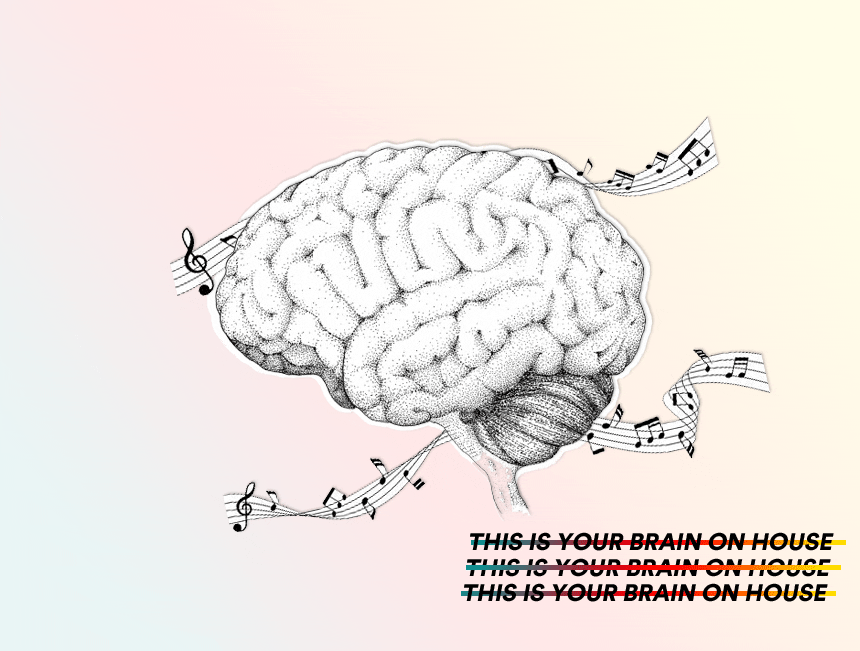
Scientific studies into music’s effect on the brain tend to focus on classical composers, but what does your brain look like on house music?
The effects of music on the brain have been scrutinised by scientists for decades. The results have been fascinating. First we learned Mozart made us smarter. Then we learned that actually any music would have the same effect.
But what about house music specifically? We know the pounding headaches that can come after a night at the club, but how much of that is down to alcohol, atmosphere and sleep deprivation? Why is it that we still want to listen to house music in our headphones?
Why we listen to music
We don’t need to quote from great thinkers to explain the importance of good music, but we will do so anyway. “Without music,” said 19th century philosopher Friedrich Nietzsche, “life would be a mistake.” He also said: “We should consider every day lost on which we have not danced at least once.” (Was Nietzsche a house fan?)
We all know that listening to music brings us pleasure and joy (and sometimes pain), but what is happening inside our brains when we listen to it? The answer is: a lot. When you hear a song, all four lobes of the brain react. Memories, emotions, thoughts and movement are all impacted. Your brain processes the tone, pitch and volume of the music in the auditory cortex, then sends this information to the rest of the brain, creating a richer experience. When it gets to the amygdala, your brain releases dopamine: the chemical behind rewards and pleasure.
With all of this literally in mind, it’s no wonder we choose to listen to music as much as we do, and it’s no wonder it inspires such passion from those who hear it. But what specifically is unique about house music?
Your brain on house
Considering the many subgenres of house and wider electronic music, it is not surprising that house music can affect your brain in many different ways.
Ambient house, chillout and downtempo can help you focus. The repetitive patterns and ambient soundscapes are unobtrusive and stimulating, aiding concentration without distracting.
Other forms of house and electronic have other effects. The release of dopamine, the pleasure chemical, is found to be greater at so-called ‘peak emotional moments’ in a song. The level of reward at this moment of peak emotion is thought to correspond to the length and intensity of anticipation during the build up.
Clubbers will know that their favoured genres like dubstep, trance, and EDM feature heavy emphasis on the build ups to drops, creating peaks that are both sonic and emotional. All DJs use the build-up/drop structure to some extent, manipulating tension and release in the mix between songs. The extended run-times and longer builds found in 12” records, a house staple, also serve to heighten the peak emotional moments in music.
The repetitive rhythm patterns of house music also make it unique. Research shows a relationship between rhythms in the brain and rhythms in music, which is no doubt a factor in the enjoyment of house and electronic music. For some, certain rhythms are more difficult to recognise. This doesn’t necessarily make them worse dancers, but it does mean they are more likely to enjoy music that they can better comprehend. Fans of house music may be predisposed to prefer faster beats and pulsating rhythms, or it could be that repeated exposure and a greater understanding the subtleties of the genre are what draw us to it.
For the most part though, all good music has a similar effect on all brains, no matter the genre, instrumentation or composition – we’re hardwired to respond positively to rhythm, melody and harmony. Music stimulates you, engages your emotions and creates enjoyment, and house music is no exception.
Check out our Live and DJ Rosters to book some mind-enriching artists and DJs.

